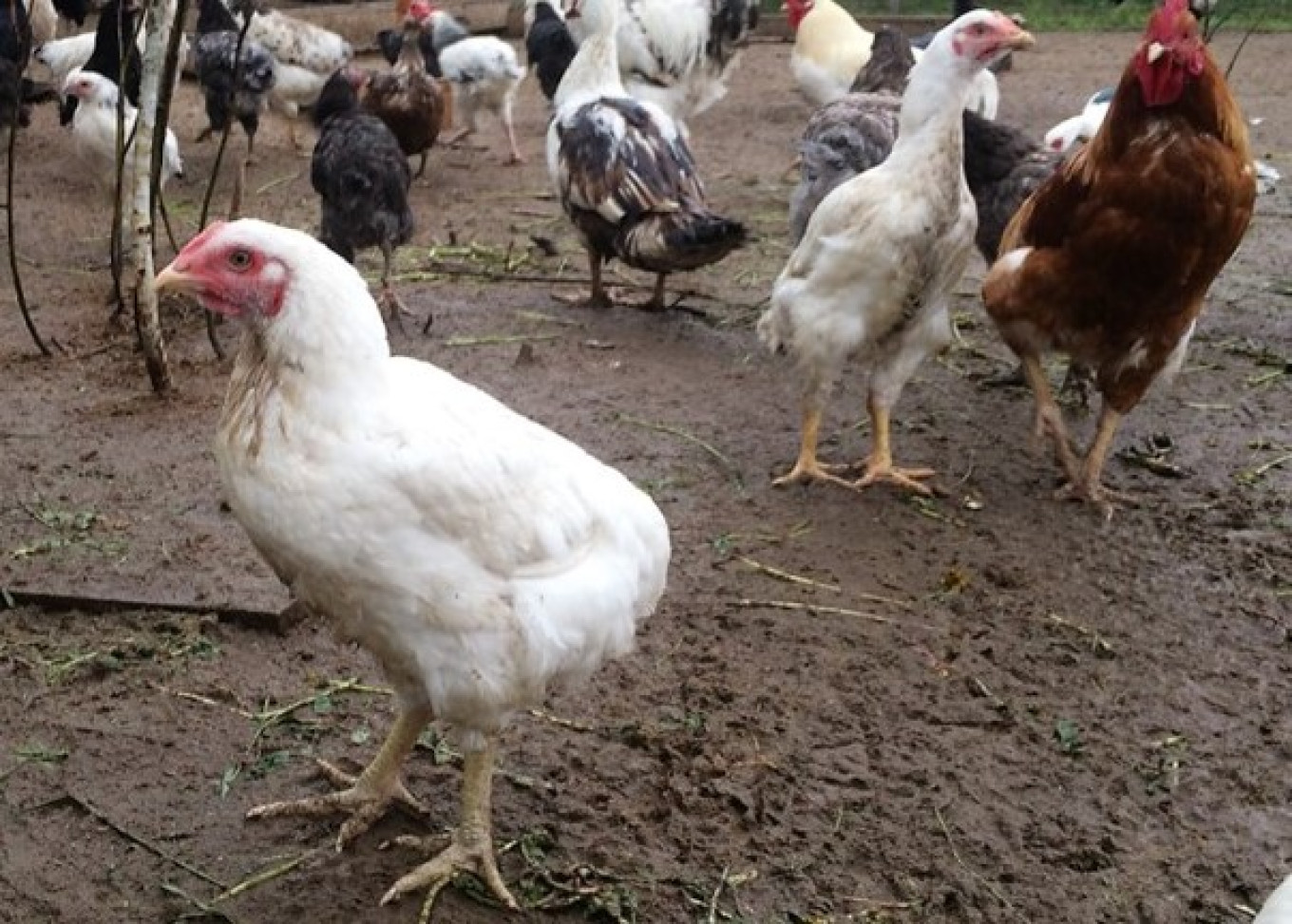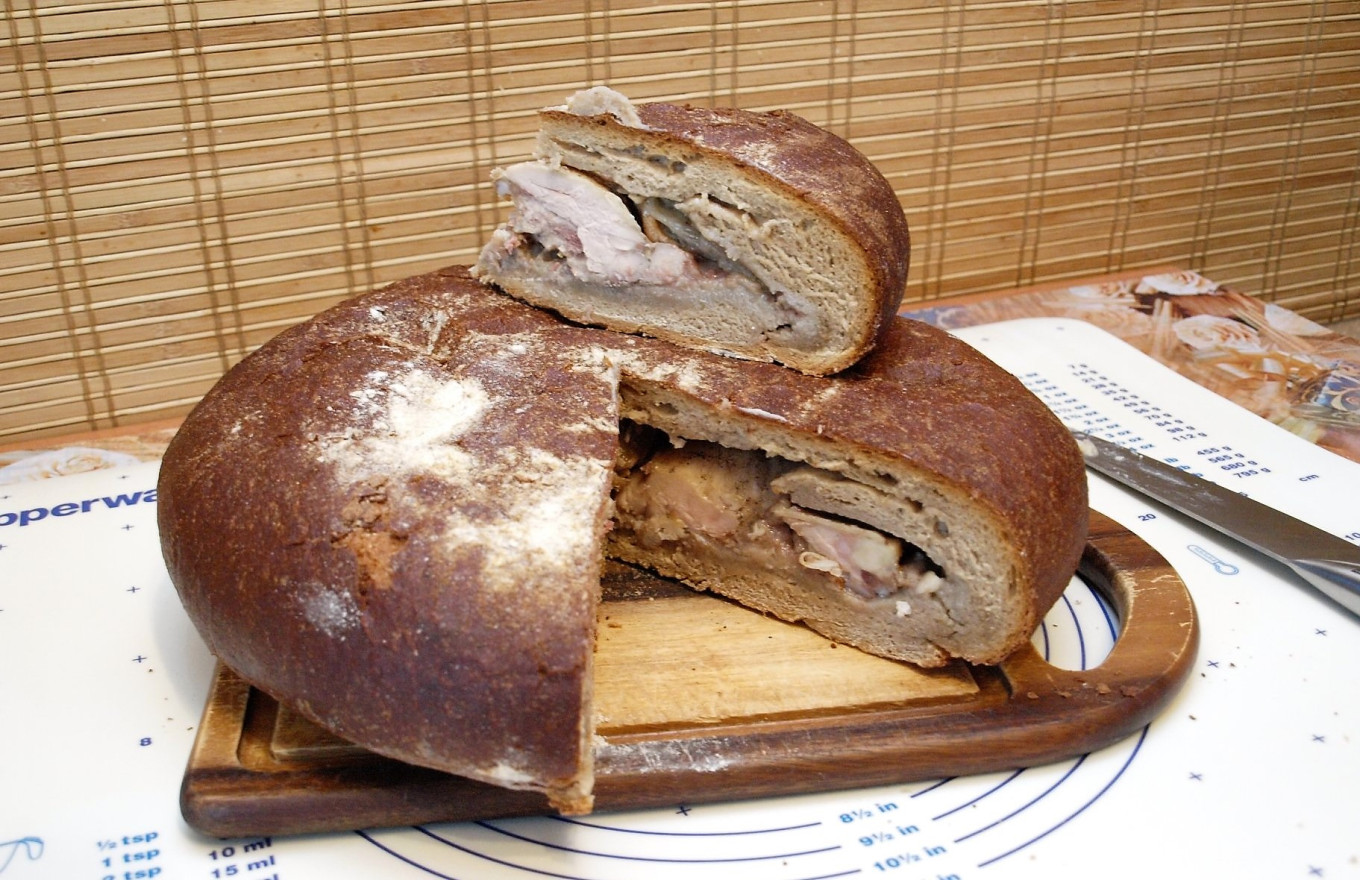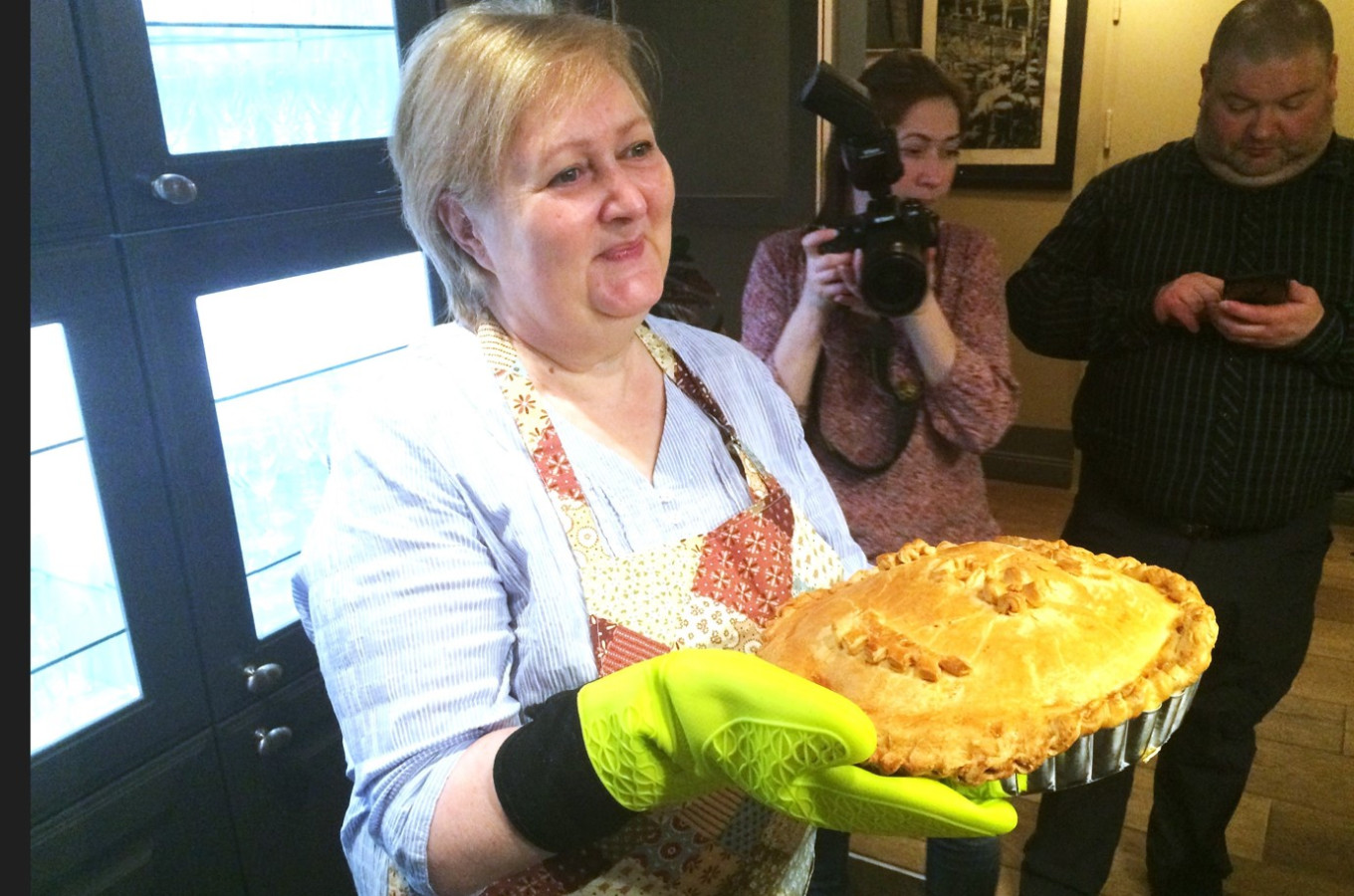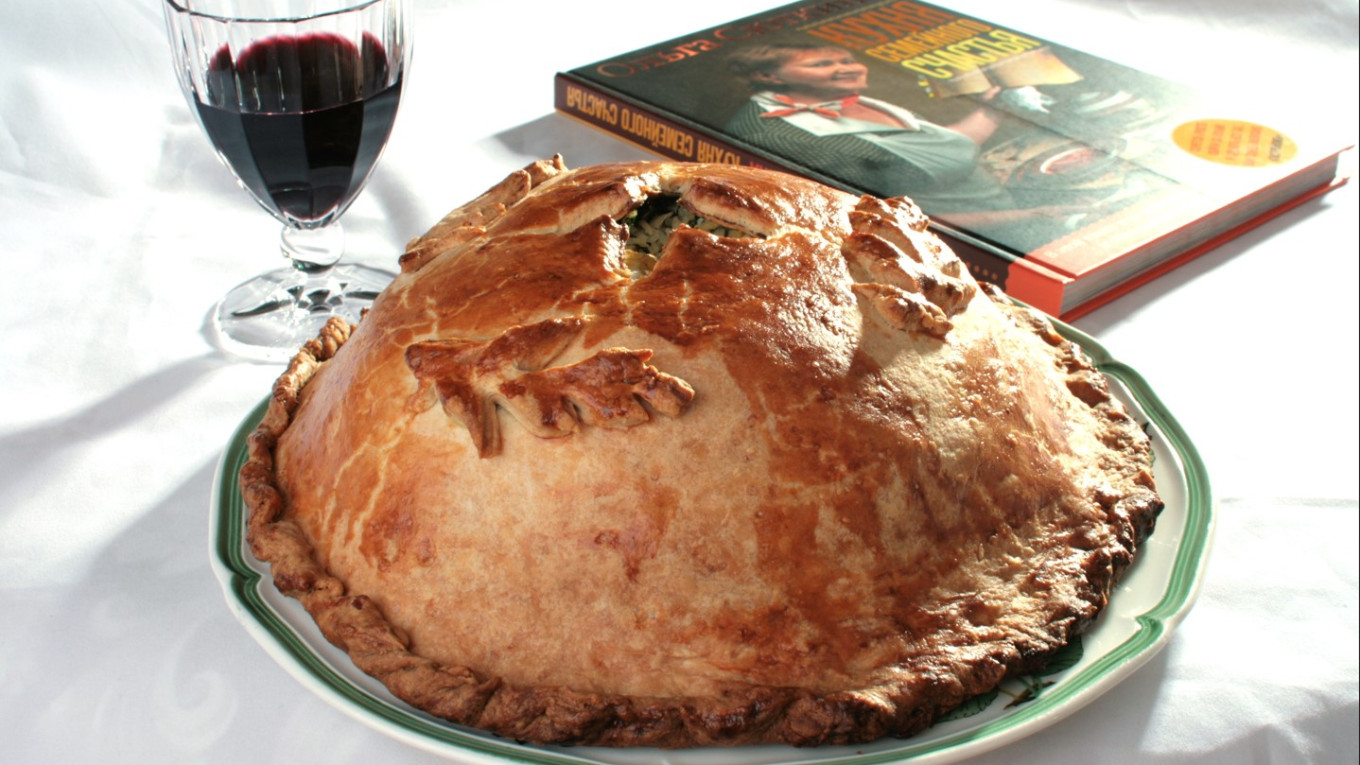Today if you said a woman looked like chicken, she’d be deeply offended. But in the olden days in central Russia, a chicken was good omen at a wedding. Comparing a bride to a hen was considered a kind thing to say and a blessing for the upcoming marriage.
Chickens were a traditional part of Russian weddings. The bride’s mother would bring a chicken decorated in colorful bits of cloth as a reminder of her parents' home. In the Oryol region a hen — a kind of dowry— was put under the stove so that the bride would feel at home at her new hearth. And in the Tula region the relatives of the bride came with a chicken on the second day of the wedding to honor the bride's transition to her new life.
So much for the so-called "Orthodox kitchen," which was supposed to have deep roots in the life of the Russian people hundreds of years ago. In actual fact, whatever folk tradition you look it, you discover that it’s typical domestic magic, the echoes of pre-Christian culture. There is just a bit of holy oil of official religion rubbed on top.
The custom of giving the bride a hen as a gift is related to the most ancient ideas about the continuation of the clan. The hen is the embodiment of female fertility.

Peasant ideas about the magical properties of the chicken can also be seen in traditional wedding dishes. Kurnik in the Ryazan region is a pie that is filled with chicken and sometimes eggs baked in their shells, served to the bride or intended for her girlfriends.
Kurnik is a ritual pie whose very shape and filling was a kind of wish for the woman of the house. The “cockscomb and base” was reminiscent of traditional tools to card wool, and so was a wish for the bride to be good at spinning and weaving. Eggs in their shells were images of children in the womb — a wish to have children and carry on the family line.
But kurnik isn’t just for show. It is a delicious pie, a medieval culinary relic that has survived right up to the present. It is as good a reflection of the time period as chain mail armor or a spinning wheel, since it conveys what our distant ancestors thought about flavor and the beauty of the table.
In 1699, an envoy of German Emperor Leopold I visited Moscow. Among the vast number of dishes on the table were “two kurniks, round in shape, two unleavened kurniks, and two kurniks made from fine flour.” The kurnik was clearly an instrument of medieval Russian diplomacy.
"Kurnik, that is, a kind of pâté, is a pastry stuffed with chicken, eggs, mutton with butter or beef fat.” That’s what the famous Russian historian Nikolai Kostomarov wrote in his "Sketches of the Home Life and Morals of the Great Russian people in the 16th and 17th Centuries.” Of course, pâté in those days is not what we call a pâté today. At that time it was a pie of seasoned minced meat. Because the meat was inside sealed dough, it didn’t spoil quickly.
The region of Ryazan is especially famous for this dish. Alexander Solovyov, professor at the Department of Cultural Studies at Ryazan State University, sent us pictures of a kurnik that he and his colleagues received from the village of Ilyinka. Just look at this gorgeous pie!

This Ilyinsky kurnik weighs 3.8 kg (8.4 lb). It is 28 cm in diameter 28 cm (11 inches) and 8 cm (3 inches) high. Made out of rye flour, the kurnik is stuffed with pieces of chicken (with bones), and the bread "lid" is either cut off around the perimeter or broken by hand.
They traditionally also make a wheat flour kurnik like a huge loaf of bread. A whole chicken is placed inside in one piece. The wheat bread, which soaks up the chicken fat and seasonings, is considered by many to be a greater delicacy than the chicken itself.

Of course, when they make a kurnik like this in a village, they only use their own chickens, never a store-bought bird. And many families in Ryazan villages still keep their old Russian stove just to make kurniks. It’s just not the same when it’s baked in a modern gas oven.
A kurnik isn’t only for weddings. It is also made for smaller family occasions or for company. The most important kurnik of the year is baked for the feast of the Kazan Icon of the Mother of God, celebrated on Nov. 4 in honor of the icon said to have protected Russia from the Polish incursion in 1612. This is the best time to visit.
This old tradition survived the Soviet regime. For example, "In Skopin in 1929 guests were treated to okroshka soup with meat aspic, rich meat soups and milk noodles. The main treat was kurnik, a chicken baked in dough. The upper crust was broken by hand, the chicken was taken out, cut into pieces and eaten on the bread. On most days the peasants were very economical with food so that the holiday table would be abundant. Many elderly women remember how impatiently they used to wait for the holiday just because of the feast.”
The culinary past that we thought was gone forever is still here today. All you need to do is drive about 200 kilometers from Moscow, where your modern car turns into a time machine.
If you can’t drive to Ryazan but want to take a culinary journey into old Russia — make a kurnik. Here is the recipe we use, which is a bit more modern and lighter.

Kurnik
Ingredients
For the dough
- 400 grams (14 oz or 3 ¼ c) flour
- 3 Tbsp sour cream
- 100 g (7 Tbsp) butter
- 1 egg
- 1 Tbsp sugar
- 1/4 cup milk
- 1/3 tsp soda
- 1/2 tsp salt
For the filling
- 1 whole chicken
- 8-10 thin blinis
- 1 cup white short-grain rice
- 400 g (14 oz.) mushrooms
- 1 onion
- 4 Tbsp butter
- Parsley
- Salt, pepper to taste
For the sauce
- 1/2 cup chicken broth
- flour - 1 tbsp.
- 2 Tbsp butter
Instructions
- Bake thin blinis using a recipe of milk, flour, sugar, salt and eggs (there are many crepe recipes online with these ingredients).
- Boil the chicken and cool. Cut it into small pieces. Use a part of the broth to make sauce according to the recipe.
- Mix together sour cream, milk, eggs, sugar, salt, flour and baking soda and knead into elastic dough. Let rest for 40 minutes.
- Heat oven up to 180˚C (350 ˚F)
- Prepare the sauce: Sauté flour with butter until golden, add broth and stir with a whisk. Bring to a boil and cook for 5 minutes.
- Sauté the mushrooms with onions in butter; salt to taste.
- Cook the rice and mix with half of the sauce and finely chopped parsley. Salt to taste.
- Mix the chicken pieces with the rest of the sauce.
- Divide dough into two parts: 1/3 for the top, 2/3 for the base.
- Roll out the bottom dough, fit into a pan or on baking tray, cover with a layer of rice and then one or two blinis.
- Place a layer of fried mushrooms and then blinis.
- Next layer: chicken with a layer of blinis.
- Repeat layers, starting with rice.
- Roll out the dough for the top. Cover the kurnik, pinch the edges tightly closed and make a hole in the middle to release steam. Decorate with dough leaves. Bake in a preheated oven for 1.5 hours.
- Let cool a little and serve.

A Message from The Moscow Times:
Dear readers,
We are facing unprecedented challenges. Russia's Prosecutor General's Office has designated The Moscow Times as an "undesirable" organization, criminalizing our work and putting our staff at risk of prosecution. This follows our earlier unjust labeling as a "foreign agent."
These actions are direct attempts to silence independent journalism in Russia. The authorities claim our work "discredits the decisions of the Russian leadership." We see things differently: we strive to provide accurate, unbiased reporting on Russia.
We, the journalists of The Moscow Times, refuse to be silenced. But to continue our work, we need your help.
Your support, no matter how small, makes a world of difference. If you can, please support us monthly starting from just $2. It's quick to set up, and every contribution makes a significant impact.
By supporting The Moscow Times, you're defending open, independent journalism in the face of repression. Thank you for standing with us.
Remind me later.







